Why is “Bakuman” a successful manga adaptation?
Quick Answer: Japanese mangas don’t invite easy adaptation. For a variety of reasons, the adaptations often fall flat. But Bakuman—a film that follows two manga writers—works as one of the best live-action adaptations in the field, infusing its self-referential fondness for its parent industry into every aspect of the film. The filmmakers use this self-referentiality to their benefit, featuring popular mangas to appeal to the genre’s passionate fanboy following. While the film’s staying power certainly has to do with the flashy visuals and dynamic editing, it’s the characters’ hunger for success, overcoming of obstacles and unabashed love of manga that distinguish Bakuman from other adaptations.
Adaptations of popular material are always a challenge. It can be hard to squeeze a story into two hours, there’s the difficulty of casting the right actors, the budget might not fit the needs of the script, and so on and so forth. Manga adaptations are no exception; no matter how exciting the concept or arresting the visuals, they often fall flat (here’s looking at you, Dragonball). Given that Bakuman is a manga about drawing comics—a topic that doesn’t invite easy adaptation—the live-action film should have joined the ranks of middling film adaptations of its medium. Yet Bakuman (2015) works as one of the best live-action adaptations in the field, infusing its self-referential fondness for its parent industry into every aspect of the film.
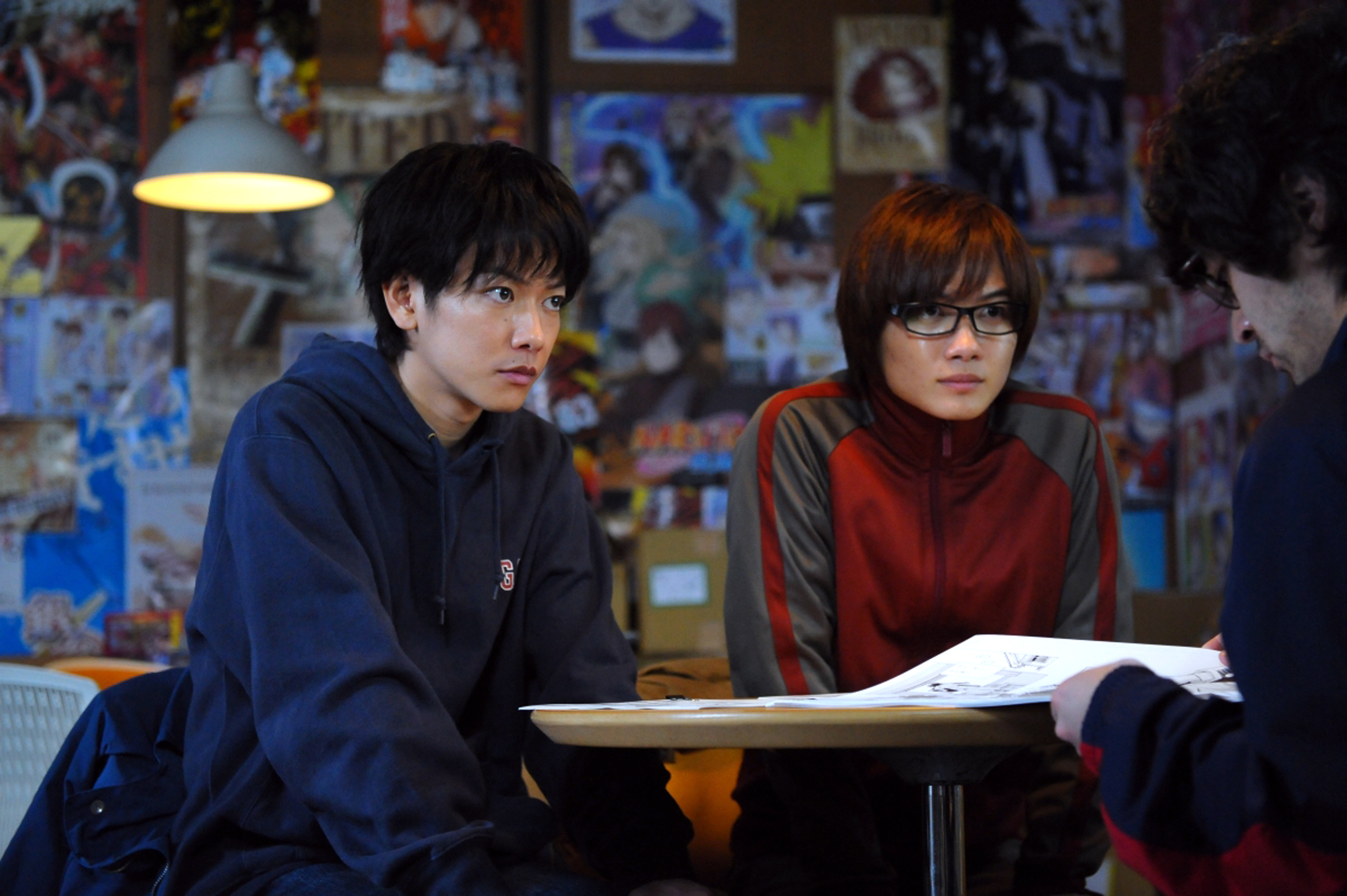
Takeru Satoh as Mashiro and Ryunosuke Kamiki as Takagi
Bakuman begins when Morita Mashiro (Takeru Satoh) forgets his notebook featuring manga-style drawings of his crush, Miho Azuki (Nana Komatsu), in class. When he comes back for it, his classmate Akito Takagi (Ryunosuke Kamiki) is holding the book. He requests that the duo become partners in creating manga - Mashiro’s artwork breathing life into Takagi’s writing. Mashiro declines; his deceased uncle was once a manga writer and he knows how difficult that road can be. But when Azuki, an aspiring voice actress, learns of his drawings, Mashiro asks her to voice the heroine of their manga should it be successful enough to be adapted into an anime. With her approval, Mashiro joins Takagi on their quest towards weekly publication in Shonen Jump, the country’s most popular manga magazine.
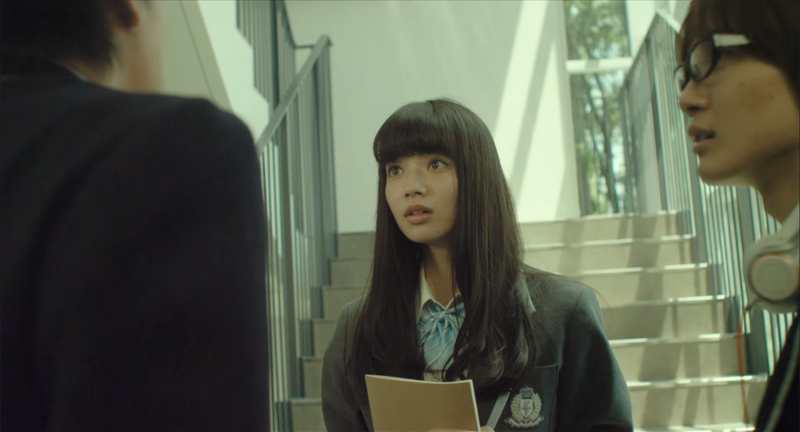
Nana Komatsu as Azuki
Bakuman is not without its faults. The plot-driving romance idealizes Azuki as opposed to giving her character any depth, and there are a few moments when the characters’ cartoonish cheers and vigorous high fives feel like something literally pulled from a comic. But the film works best when it focuses on its central pursuit: manga enthusiasts working to get published in their favorite magazine. The film is unashamedly commercial and full of references to real life manga culture, appealing to manga’s passionate fanboy following. Billboards for Shonen Jump are everywhere, and its offices become a prominent setting for the film’s protagonists. Several sequences feature either shots of popular comics (easter eggs raining down from the heavens!) or characters excitedly quizzing each other on their favorite quotes from different series. Eventually the characters even wonder aloud about their meta, deeply cheesy conversations, acknowledging the depth of their obsession. Although this obsession could come off as excessive in another movie, it merely showcases the filmmakers’ understanding of their demographic. They successfully infuse that fanboy sensibility not just in the characters’ words but also into their everyday lives. Moreover, the occasional overacting suits the exaggerated visuals of the comics. How else might you make drawing comics exciting other than dramatically changing the vigor of your pen stroke?
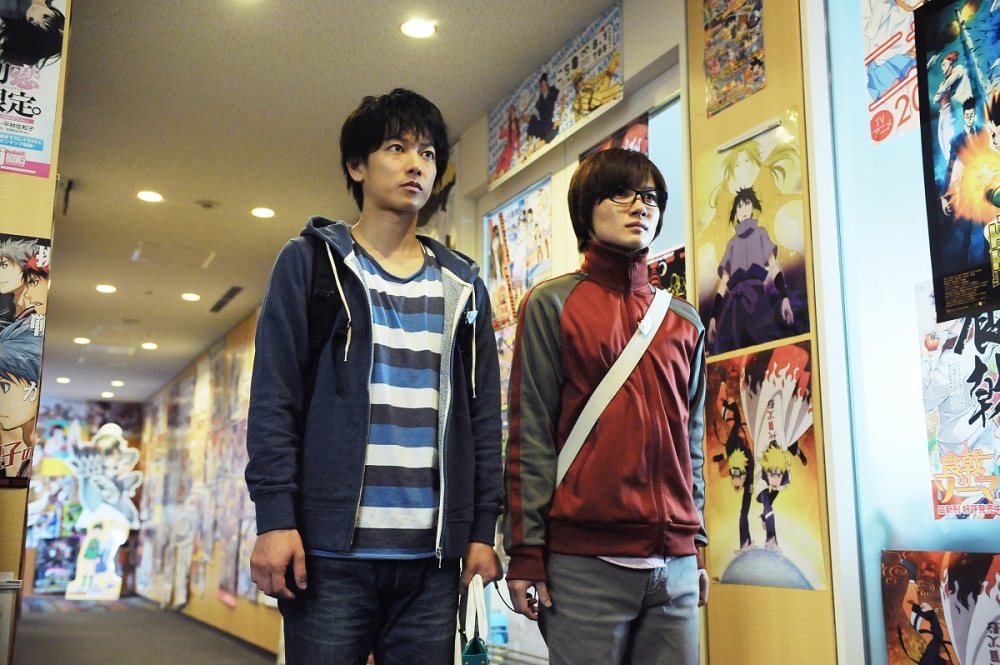
Indeed, the production of the mangas themselves comes to life with artful flair. Instead of simply showing Mashiro drawing in his uncle’s studio, the filmmakers imbue these scenes with excitement. The rock band Sakanaction adds a mounting energy to each scene, its score providing a slow build in every moment the characters think of a new idea or inspiration. The result is scenes that are packed with adrenaline. The first work sequence shows our heroes toiling away against the backdrop of dynamic jump cuts. This process is accompanied by narration of the lessons they’ve learned about their work (who knew different strokes required different pens?). But with each stumble on their road to success comes new inspiration - and new sequences. An early standout sequence features Takagi slowly discovering a new story while watching a volleyball game. At first, it just seems like another quickly edited series of images to a rising score. But then the camera cuts to Takagi’s face as the images of his and Mashiro’s next manga flash across his glasses.
It’s this simple realism—the excitement of day-to-day discoveries realized through special effects, not led by them—that distinguishes the film from other manga adaptations. It’s not a poorly plotted, technicolor acid trip like the Wachowskis’ ambitious Speed Racer (2008) adaptation, nor does it aspire to the sleek-action-meets-corny-script of Attack on Titan (2015). This is a story that is grounded in the real world. The special effects don’t feel like a crutch; they are driven by the characters’ simple hunger for success. In this way, the goals of Mashiro and Takagi are decidedly relatable. As they work towards an impossible dream, each sequence shows the ink leaping off the pages - literally and figuratively. In one instance, ink colors itself in after Mashiro draws the outline, realizing itself through his passion. Other times, the pages become the walls of their workspace. In the film’s most elaborate sequence, Mashiro and Takagi find themselves combating their rival in a fantastical battle of giant pens and towering walls of drawings. When they lose, the film shifts back to the real world, where their exhaustion is palpable.
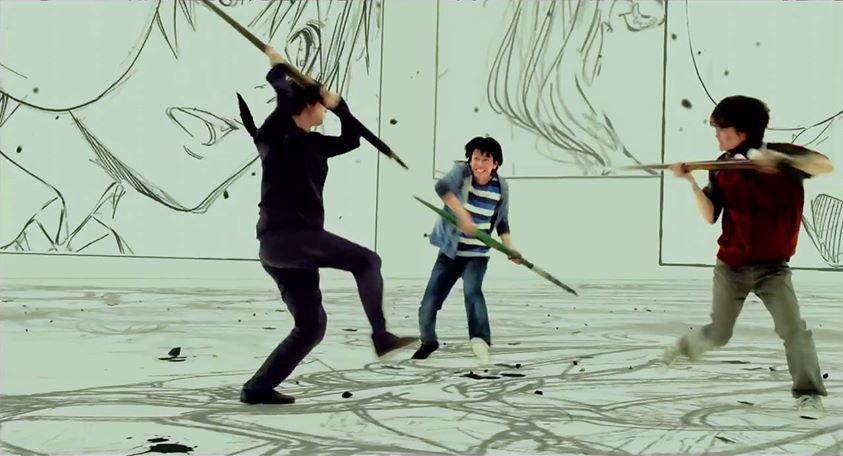
The characters’ and the filmmakers’ love of manga is infectious. Though their enthusiasm is often exaggerated, their passion provides a real sense of what this industry means to Japan. It’s not just an adolescent or niche hobby like comics are in America. In Japan, manga makes up over 30% of the publishing industry. For those not familiar to the hold manga has over Japanese culture, Bakuman provides an understanding of Shonen Jump’s—and the larger manga industry’s—significance and inner workings. Each new character brings a different genre of manga to the fore and a different backstory fueling their interest in this industry. The diverse cast of writers and animators also raise the film’s ultimate question: Is success worth it?
This is a question that plagues manga writers in real life. In Bakuman, the writers are students who should be busy with their studies. But their commitment to manga begins to take over their lives; they’re losing sleep and sacrificing their health for their work. In a scene meant to mirror the death of Mashiro’s uncle, an overworked Mashiro collapses and must go to the hospital. Shonen Jump’s editor-in-chief (Lily Franky) comes to the hospital to put a pause on their publication, not wanting to risk the well-being of another writer. Unfortunately, this sort of extreme exhaustion or even illness isn’t an exaggeration. It’s something manga writers struggle with regularly. One Piece creator Eiichiro Oda says he only sleeps from 2:00 AM to 5:00 AM every day, though he has since taken a break due to complications from tonsillitis. Similarly, a member of Clamp, an all-female manga collective, once took a medically advised six month rest period after working herself into a lumbar compression fracture. The writer of D.Gray-Man has taken at least four breaks thanks to norovirus, neck injuries and other rumored health issues.
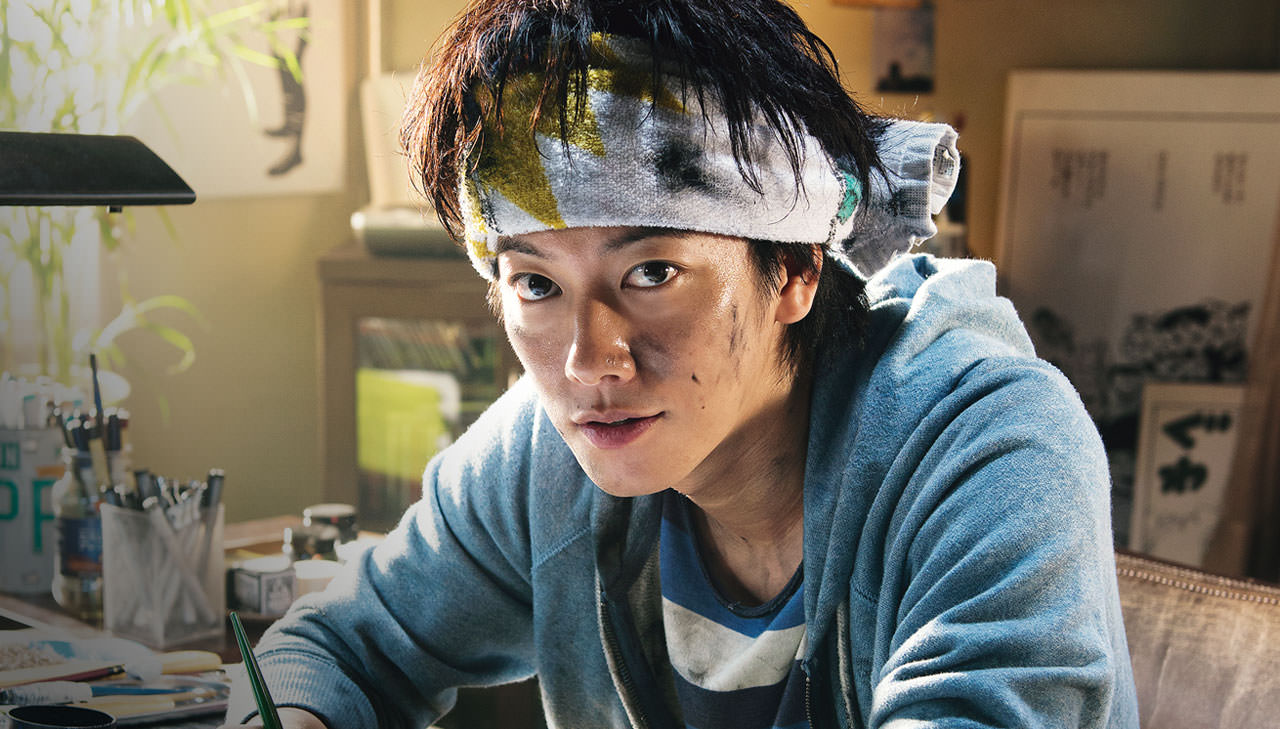
In this way, Mashiro’s injury feels true to life and, for that reason, all the more devastating. But this is where the film is again saved by its manga roots. “Friendship, struggle, triumph” aren’t just the words that drive Shonen Jump’s best work. It is also the mantra that motivates Mashiro, Takagi and their peers. Their friends and rivals assist the duo in their time of need, motivating them and coloring in the panels to help Mashiro and Takagi meet their weekly deadline. It’s a sequence that uniquely doesn’t rely on the previous tricks and flashy imagery, sticking instead to visuals depicting steady, diligent work against a quieter, more reflective score. When their publisher asks their editor what he would have done if Mashiro had really gotten sick, the man replies, “When editorial and creative clash, the true editor sides with the creator.” It’s not the most health-conscious answer, but it is one that reflects the realities of the industry.
With this full color lead story ready just in time for weekly publication, Mashiro and Takagi finally reach their ultimate goal of becoming the readers’ top pick for the week. And then they fall. They’re never able to achieve that same level of hard work and passion in their comic, their weekly reader rankings drop, and their run gets canceled. Suddenly we’re back where it all started: in the classroom with Mashiro and Takagi. They’re skipping graduation because for them, school wasn’t a place solely defined by scholastic learning. It was where their love of making manga together was born. They wonder briefly what life might be like now - unemployment, perhaps? Takagi has a better idea. And with that, they look at the chalkboard. The music lifts, the chalk starts moving, and we’re back in the game. I only wish I could see what they make next.

